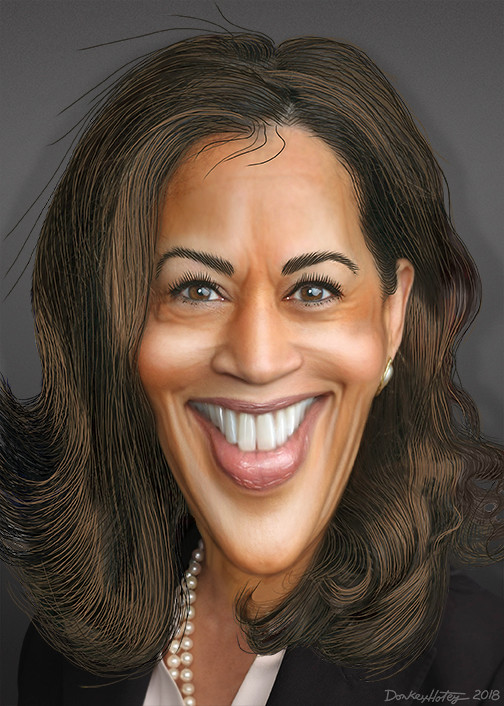Welcome to Thunderdome, where the vibe is Miller High Life — which should only ever be enjoyed in a longneck as befitting the champagne of beers — and a Kamala Harris campaign turning from ebullience to despondence in short order. As my colleague Amber Duke and I discuss in the latest Thunderdome podcast, the refrain is simple: the joy is gone. The summer vibes that once sent a thrill down the pant legs of everyone on the set of Morning Joe, including Mika and her lower-T colleagues, are now reduced to a point of constant contention: what is Kamala doing wrong — and how can she right the ship? And why can’t Tim Walz be more like Josh Shapiro? And, even more: why won’t Joe Biden just shut up?
The answer to that final question is obvious: he no longer cares if Kamala Harris wins or loses. Nancy, Barack, and Chuck made their bet. He is content to let her dangle. And in that dangling, she is repeating the mistakes of the past — as Alex Shepherd writes at the New Republic:
Five years ago, Harris entered the primary with an expansive message ideally suited for a general election campaign. When that primary quickly became the most policy-heavy in American history, it faltered. Now, having been anointed her party’s nominee without a primary, Harris doesn’t have to do most of the things she struggled with five years ago. She doesn’t have to engage in drawn-out, detailed policy discussions or engage in the delicate maneuvers and triangulations crowded primaries require. She can run the kind of campaign she instinctively wants to: one built on broad strokes and big themes. Harris’s core message — that it’s time for her party and the country to come together to exit the Trump era finally — resonates far better when she is leading a presidential ticket than it did when she was competing with a dozen other challengers.
But the flaws in Harris’s approach are as clear now as they were five years ago — and they could prove to be just as disastrous now as they were then.
Five years ago, Harris’s campaign largely failed because she couldn’t offer a larger vision for her party or the country. Then, as of now, she talked about the need to lift the middle class and promote freedom and decency at home and abroad. But even as she has slowly fleshed out her platform, it’s still unclear what her main policy priorities would be as president. There is a general suspicion that she intends to retreat slightly from Biden’s robust, worker-friendly economic agenda and that her presidency would be more corporate-friendly. (Indeed, in a big speech laying out her economic agenda, Harris echoed the vagueness of her 2019 Times interview, promising to eschew ideology and instead take “good ideas from wherever they come.”)
But what she has articulated amounts to a grab bag of ideas on par with what she offered in the last Democratic primary: a mix of progressive and neoliberal policies (with lots of tax credits and populist bromides) that suggests no real core ideas about domestic policy. Five years ago, Harris tried to dodge the question of what the Democratic Party should be and how it should govern; today, it’s still not clear she really has an answer.
A campaign that can be reduced to “I am not physically the same person as Joe Biden” is a campaign in desperate need of a message. The problem for Kamala is that time’s a-wasting — and she seems to be tracking not toward finding her footing but toward new speed bumps, including ones set up by the very media figures who very much want her to win. If she ends up being the sacrificial lamb this cycle, it won’t be for lack of effort to turn her into a winner. It will be because she played it too safely, misread the electorate, and thought the vibes could save her. They never do.
Trump’s breaking through the blue wall: At least according to the pollsters.
New Quinnipiac University polls show Donald Trump gaining in the Rust Belt states central to Kamala Harris’s campaign, including taking a slight lead in Michigan. The polls, conducted October 3-7 and released on Wednesday, found that Harris leads Trump by three percentage points in a hypothetical two-way match-up in Pennsylvania, with 49 percent support to 46 percent. Trump, meanwhile, leads by three percentage points in Michigan, 50 percent to 47 percent. The race is even closer in Wisconsin, with the candidates neck and neck: Trump at 48 percent and Harris at 46 percent. All three results are within the margins of error. The results represent troubling signs for Democrats: Harris’s lead appears to be shrinking in key battlegrounds as Election Day approaches. In Quinnipiac’s poll conducted in mid-September, Harris held a lead in Pennsylvania and Michigan, with the race essentially tied in Wisconsin. Trump is set to hold a pair of campaign events Wednesday in Pennsylvania, including a rally in Reading and an event in Scranton, the hometown of President Joe Biden. Regarding issues, the Quinnipiac poll shows Trump leading Harris across all three states regarding the economy and immigration, similar to last month’s poll. Harris leads Trump on preserving democracy in Pennsylvania and Wisconsin and on abortion in all three states. More here. The general takeaway: Harris must make up for the trendlines in Wisconsin, Michigan and Pennsylvania. But where?

